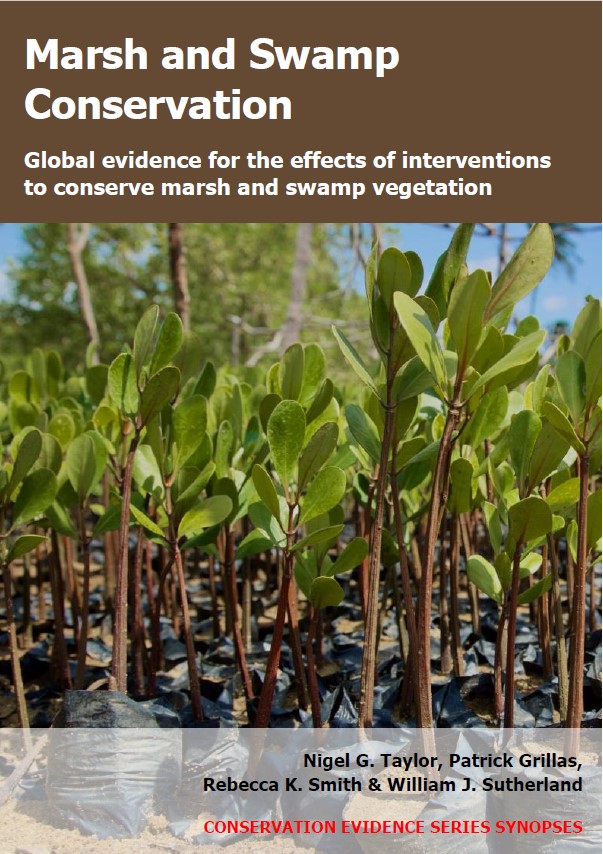Control problematic plants (specific intervention unclear): brackish/saline marshes or swamps
-
Overall effectiveness category Unknown effectiveness (limited evidence)
-
Number of studies: 1
View assessment score
Hide assessment score
How is the evidence assessed?
-
Effectiveness
55% -
Certainty
30% -
Harms
0%
Study locations
Supporting evidence from individual studies
A replicated, site comparison study in 2007–2008 across 16 salt marshes in Connecticut, USA (Elphick et al. 2015) found that plots where common reed Phragmites australis had been controlled had a similar vegetation density, cover of saltmarsh cordgrass Spartina patens and vegetation height to natural marshes. After 4–10 years, plots where common reed had been controlled had 10% common reed cover – greater than the 1% cover in natural marshes. However, other measured variables did not significantly differ between reed-control and natural marshes. This included overall vegetation density (28 vs 35 stems/100 cm2), cover of saltmarsh cordgrass (18 vs 20%), and maximum vegetation height (55 vs 40 cm). Methods: In summer 2007 and 2008, vegetation was surveyed in 26 plots (each 1 ha) spread across 16 salt marshes. In seven plots, interventions to control common reed had been implemented 4–10 years ago. The interventions included cutting and applying herbicide (further details not reported). The other 19 plots contained natural salt marsh vegetation. Vegetation cover was estimated in nine 1-m2 quadrats/plot, stem density in forty-five 100 cm quadrats/plot and vegetation height at 36 points/plot.
Study and other actions tested
Where has this evidence come from?
List of journals searched by synopsis
All the journals searched for all synopses
This Action forms part of the Action Synopsis:
Marsh and Swamp Conservation
Marsh and Swamp Conservation - Published 2021
Marsh and Swamp Synopsis





)_2023.JPG)














